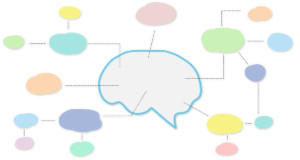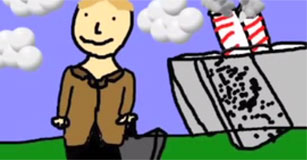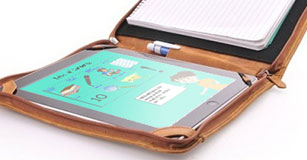50 Activities for 1st Grade
Hands-on ideas to engage first grade students in meeting standards and learning goals through digital projects.
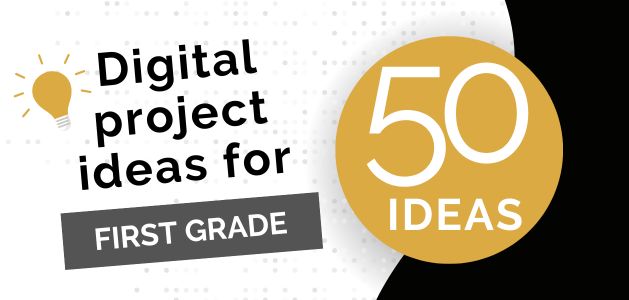
Fifty ideas for using a digital approach to help first-grade students meet standards and learning goals.
1. Make a map of your neighborhood
Have students create a map of important places in their neighborhood. Have students start with a plain page or use digital grid paper. Then, ask students to draw locations or capture photos with their devices.
2. Explore antonyms
Explore antonyms with your students. Read Dr. Seuss's The Foot Book and create a list of antonyms. You can start them off with things like hot/cold or high/low.
Students can use a creativity and productivity tool, like Wixie, to create illustrations of an antonym pair. Students can use the microphone tool to record their explanations.
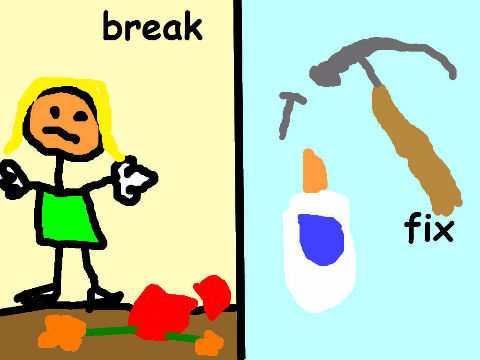
3. Go on a shape hunt
Read a book like The Shape of Me and Other Stuff by Dr. Seuss. Then have students walk around school or their home and find shapes, like rectangles, triangles, or even cylinders and spheres.
Then, have students use their devices to capture the shapes they find and label or add narration to identify them.
Seeing Shapes lesson plan with literature connections, samples, and more
4. Celebrate a community helper
Community helpers are essential to the health and success of our world. Have students celebrate how a community helper is essential to a community by combining words, pictures, and even narration in a digital sentence strip.
5. Design a school backpack
Go beyond simply coloring on the computer to asking students to design something. Since what a first grader knows is school, ask them to design a school backpack that shows off their unique personalities.
Encourage students to use their device's microphone or video camera to record an explanation of their design.
6. Create a digital greeting
Have your students create or add original artwork to a digital creativity tool and then record their voices to create a multimedia message. Copy the URL or export the file and send via email or text.
7. Scratch for self-expression
Remember scratch art? Wixie has a collection of digital scratch art pages with a variety of backgrounds students can "scratch" using an eraser tool.
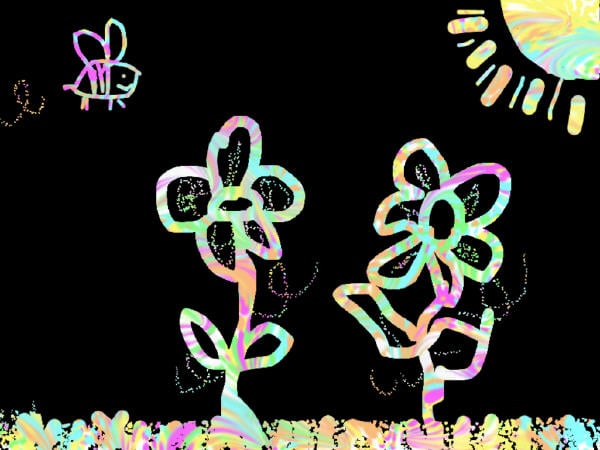
8. Make a Mondrian
Dutch painter Piet Mondrian is best known for his work that used primary colors and shapes. Visit the Tate Museum's page about Mondrian with your child to learn about this artist and his work.
Have students use a paint bucket tool to fill a Mondrian Coloring page with color.
If your students are ready to create in Mondrian's style, ask them to draw an animal and color it like a Mondrian.
9. Explore emotions with the color monster
Expressing and understanding emotions is hard for a first grader. Read The Color Monster by Anna Llenas to your learners and discuss the different emotions of the monster.
Have students choose one emotion, like happy, calm, or angry, and use a digital tool to illustrate what causes that emotion for them. Then, have them record an appropriate action they can take when they feel this way.
10. Take a 5-senses walk
Go outside and walk around your school. What do you see, hear, smell, touch, or taste? Have students take devices outside to record observations using the 5 senses with pictures and a microphone. Then, when you come back inside, add text and more details.
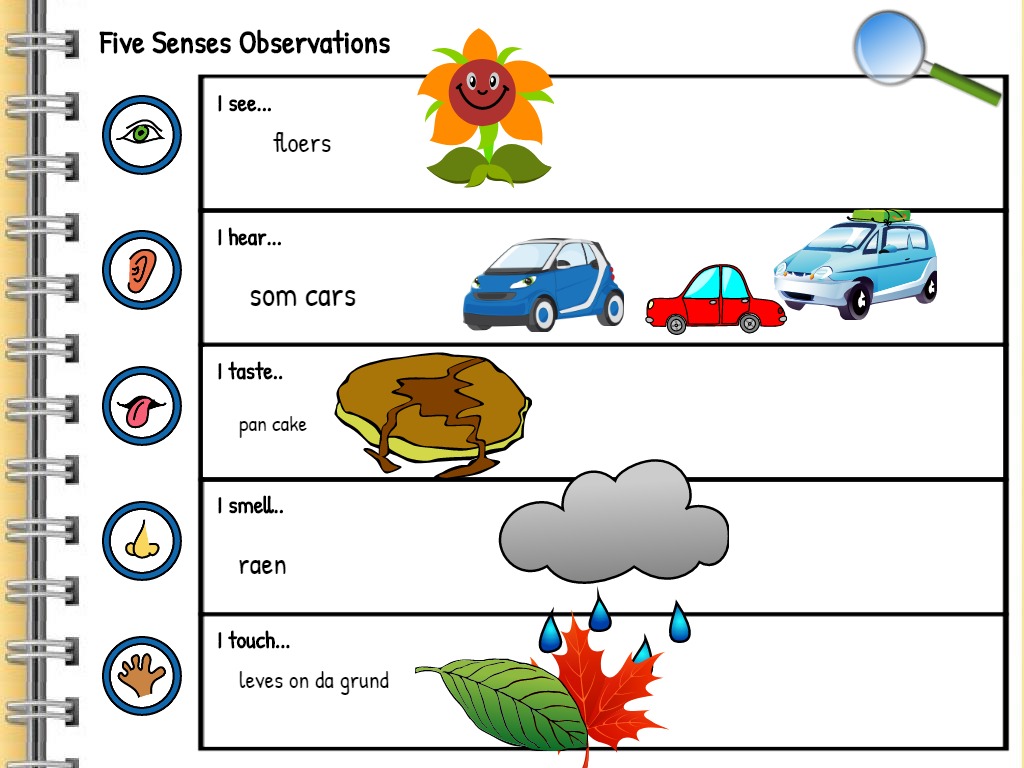
11. Design a hibernation hotel
As students begin considering what living and nonliving objects need, have them design a hotel for a hibernating animal that contains everything it needs to stay safe, warm, and fed over the winter.
Explore a Hibernation Hotel lesson plan
12. Tell a cycle story
Have students brainstorm different cyclical events in nature and then have them tell their own cycle story.
Explore a Cycle Story lesson plan
13. Survey peers
Survey your friends, family members, and neighbors about a favorite book, sport, food, game, or at-home activity. Project a question or use a tally sheet on your white board to collect student responses.
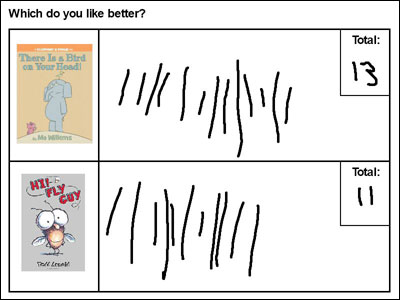
14. Become the masked reader
Take a clue from the Masked Singer television show to make reading fluency practice less stressful and way more fun.
This is especially helpful for ELLs and struggling readers since they can practice, record, delete, and try again to produce their best work. Their work can also remain completely private if the reader is not unmasked.
15. Fashion a family flag
First-grade students learn how the symbols for a country represent its history and values. Ask them to apply what they have learned about symbols to fashion a flag to represent their family.
Explore a Fashion a Family Flag lesson plan
16. Review and rate a book
Have learners write a review of a recent book they have read. Share with friends and other students to give them ideas for new titles they can read!
Explore more book review ideas, including a book review cube, on Creative Educator.
Explore a 5-Star Book Reviews lesson plan
17. Create a collage
Have students use a digital tool to represent themselves with a collage of images. Digital tools like Wixie make it easy to add images and move them around.
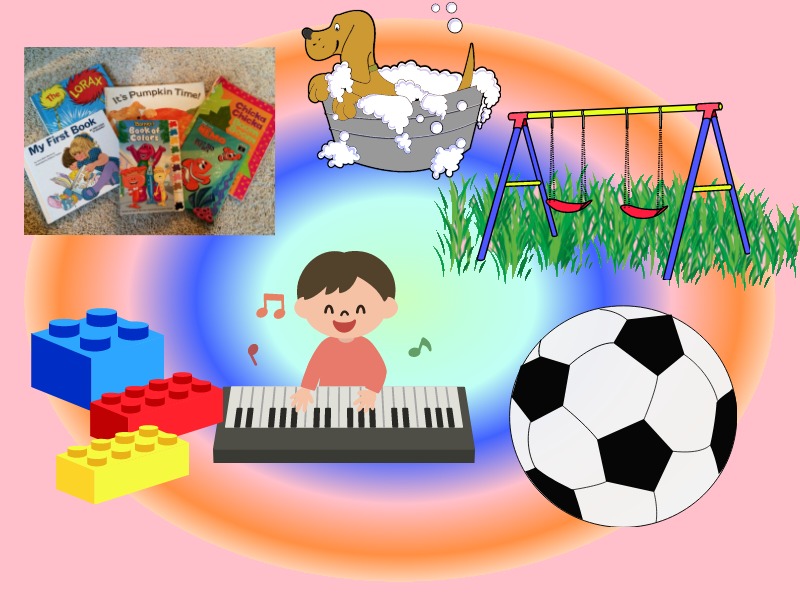
Students can use this same process to represent events in story things they see during a particular season.
Explore a Me: A Visual Essay lesson plan
18. Share a symbol story
Read Norman Pearl's The Great Seal of the United States to have students hear from Ben Franklin about the process used to create the Great Seal. Then, ask them to create a story about another US symbol.
Explore a Symbol Story lesson plan
19. Create a trait map
Have students use a character trait map to identify a character's physical traits, feelings, and actions.
Explore how to use the Mind Map tools in Wixie
20. Tell a tangram tale
After students have tried to solve tangram puzzles, read Ann Tompert's Grandfather Tang's Story where the main character rearranges tangram shapes to represent the characters and events as he tells a story.
Ask students to use tangram shapes to create their own tangram shape and tell a story about it. Combine into a class book!
21. Publish student writing
Motivate emerging writers by publishing their stories. Use a tool like Wixie to have students write or record a story and create their own illustrations.
Share a URL or export their work to PDF to easily share to family phones and tablets.
22. Graph it
Graphs help communicate numbers and value visually. They are also a great way to practice one-to-one correspondence and counting.
Post a fun question to your classroom white board and have students drag a square or use a paint bucket tool to add their answer. Then, discuss the results as a class.
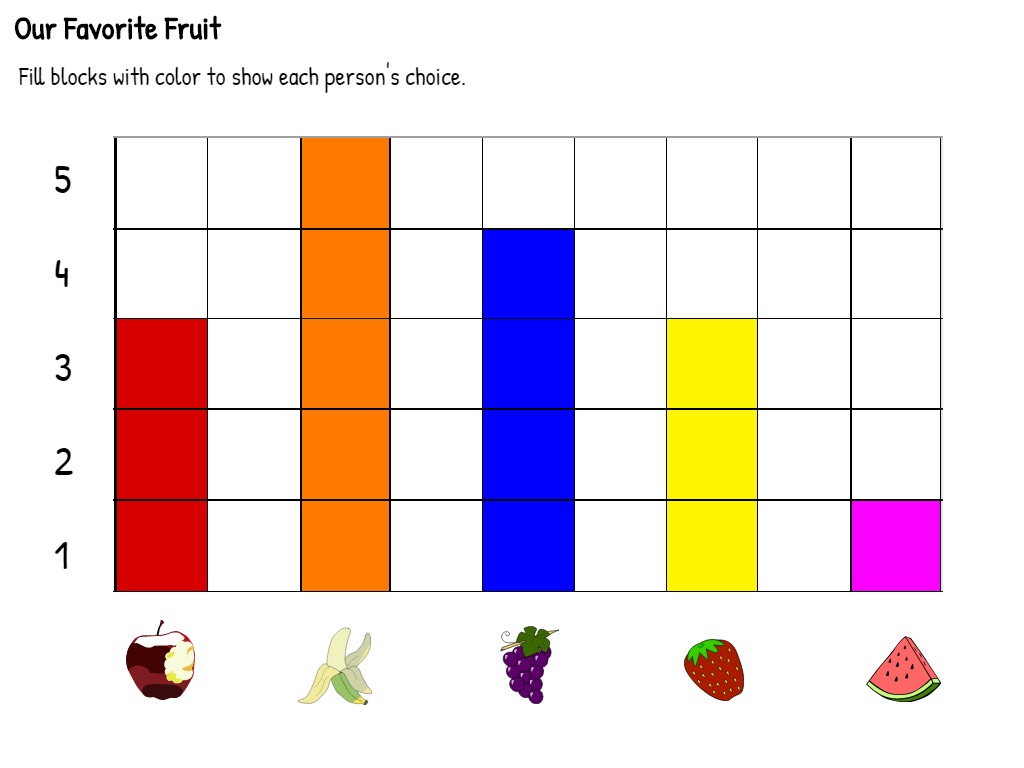
23. Observe with a new perspective
So much of what we see about our world depends on our perspective. While young students are still working to show what they observe through their sense of sight, have them practice taking someone else's perspective by sharing a view of the world from the eyes of an insect.
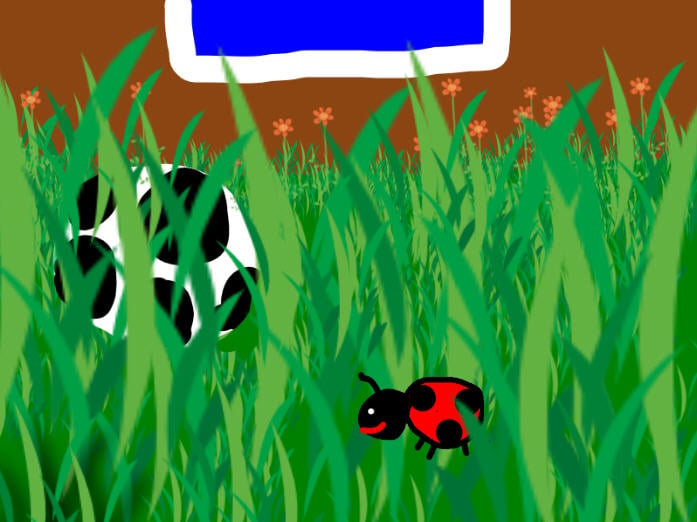
You can also ask them to complete an empathy map and then write a story about a day in the life of an insect or a letter to one of their insect friends.
24. Create a classroom tour
It can be a little scary to come to a new class with new rules. Once your students have learned and settled into your classroom routine, ask them to apply their knowledge of locations and rules to design a classroom tour.
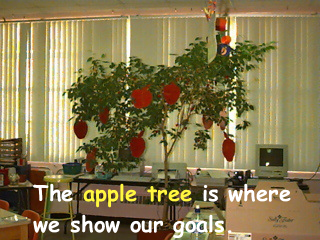
Using a digital tool makes it easy to share the finished tour with new students, as well as students joining the class the following year.
Explore a Classroom Tour lesson plan
25. Write a 5 senses poem
In addition to reinforcing scientific observation, engaging the five senses is a great way to help young learners add descriptions to their writing and practice vocabulary.
If your learners would benefit from a little direction, provide a specific topic for their poem.
Explore a 5 Senses Poetry lesson plan
26. Explore the Shape of Things
Dayle Ann Dodds and Julie Lacome showcase shapes in a fun rhythmic story in their book The Shape of Things.
Use this story to inspire students to write their own shape of things book that shows how a shape becomes a common object when specific things are added to it.
Explore a Shape of Things lesson plan
27. Write about your favorite relative
Practice opinion writing through a favorite relative project. Give structure to your emerging writers by using an O-R-E-O Opinion template which asks them to state their opinion, share 2-3 reasons why, and finish with a concluding statement.
Share students' work with their favorite relative.
Explore a Favorite Relative lesson plan
28. Adapt a pattern story
To support your budding authors, ask them to give a twist to a story they know by adding or replacing nouns and verbs.
Explore a list of books perfect for student adaptation
29. Record your positive actions
What actions do your students take to improve their community? Have students draw a picture, write a sentence and record their efforts!
30. What if you could be going places?
Call or video chat with someone who lives far away or read about a new place to learn about the weather and culture in that location. Use a digital tool, like Wixie, to show the weather, what they would pack to wear, and what they would do in that location.
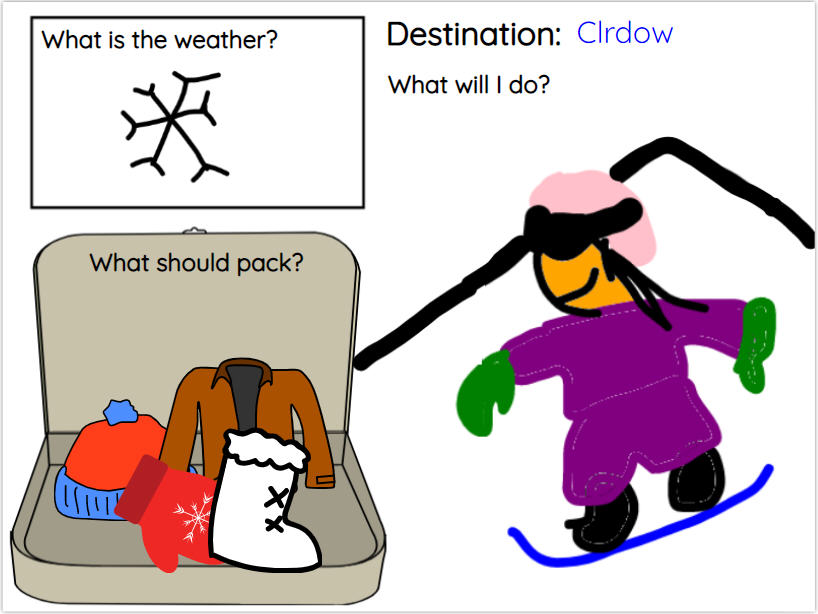
31. Record a favorite memory
Have students reflect and create a favorite memory from the school year.
Tools like Wixie make it easy to add images, text, voice recording and video to capture experiences, feelings, and achievements.
32. Practice telling time by the hour and half-hour
Students in first grade are just learning to "tell and write time in hours and half-hours using analog and digital clocks." Use a creativity tool like Wixie to draw a picture that shows an activity that occurs at a specific time each day.
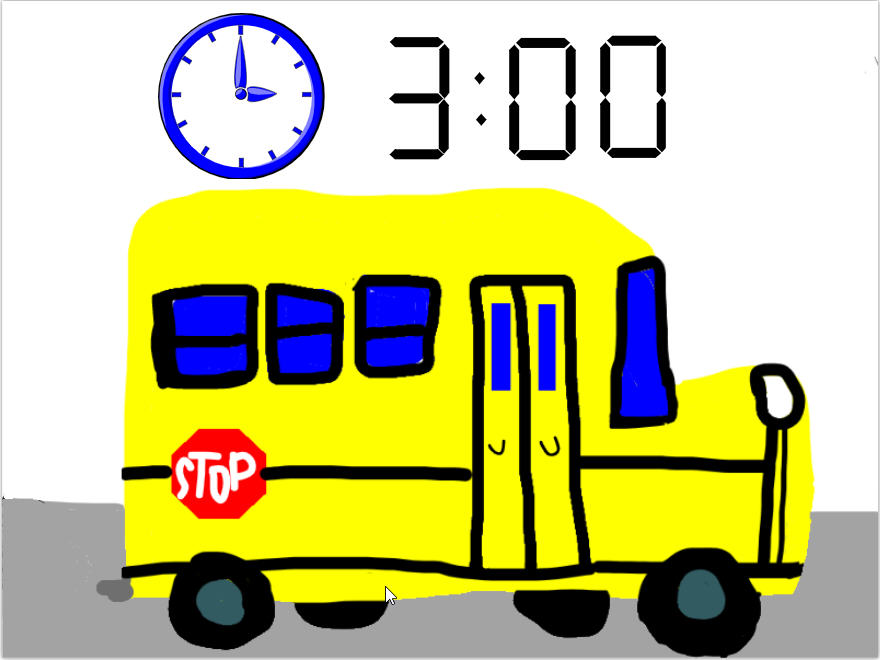
33. Persuade for a pet
Humane societies and pet rescues reported record numbers of adoptions during COVID-19. Encourage your students to write a letter or create a presentation to persuade their family to get a new pet, supporting their opinion with reasons and examples. Help students make a stronger argument with an O-R-E-O organizer.
Explore a Persuade for a Pet lesson plan
34. Raise awareness about an animal or historic figure
Ask students to inform others about a historical figure or an animal. The limited space on a trading card helps emerging writers summarize information and organize their thoughts.
35. Create a digital word wall
Digital tools make adding thoughts to a personal word wall easy. Ask each student to add words they do not know from the books they are reading. Have students look up the meaning in a dictionary or ask a parent or teacher to help them define and add a picture and even voice recording.
36. Write word problems
Have students use a paint or image program, like Wixie, to draw models that help the viewer (and themselves) visualize quantities and relationships in word problems.
37. Inform others
Even the youngest learners can inform others about the topics they are learning. Instead of struggling with writing or typing, have students use a digital tool to add an image and record their voice to share information. Perfect for ELLs.
38. Plan a class party
Planning the details for a party, including needed space (measurement) and a budget (calculations), requires students to practice and apply math and argument skills to a real-life scenario.
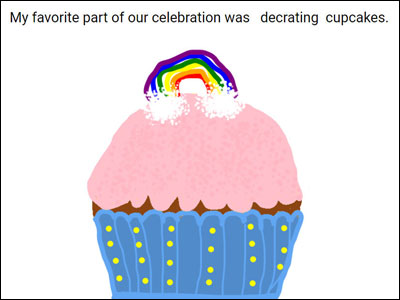
Explore a Plan an Event lesson plan
39. Build foundations for scientific thinking
Encourage your student's budding inquiry by using a modified approach to the scientific method.
Have students begin with observation and hypotheses and then progress to thinking about how they can test their ideas and then analyze the results.
40. Create an animal alliteration
Create an amazing animal alliteration - a short sentence in the noun—verb—noun format, such as "Birds build bubbles." Use a creativity tool, like Wixie, to illustrate and record voice narration.
Explore an Animal Alliteration lesson plan
41. Go on a letter hunt
To practice letter sounds, work together to create a class ABC book with pages that contain common words and pictures that begin with each letter sound.
Assign individual letters to students and combine into a class project.
42. Celebrate culture
Creating a safe and respected community culture in your classroom is essential. Have students complete and share a culture poster about themselves, including where they are from, family traditions, and more.
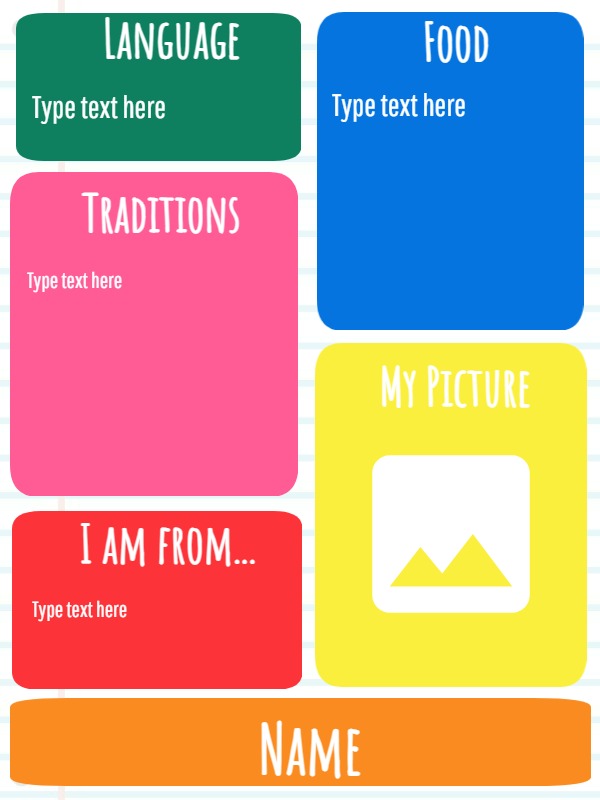
43. Use emojis to write a story
Emojis started as a time-saving way to communicate emotions without having to type each letter, but have quickly become part of popular culture. Use your student's interest in emojis to encourage creative writing. If needed, provide them with a writing prompt.
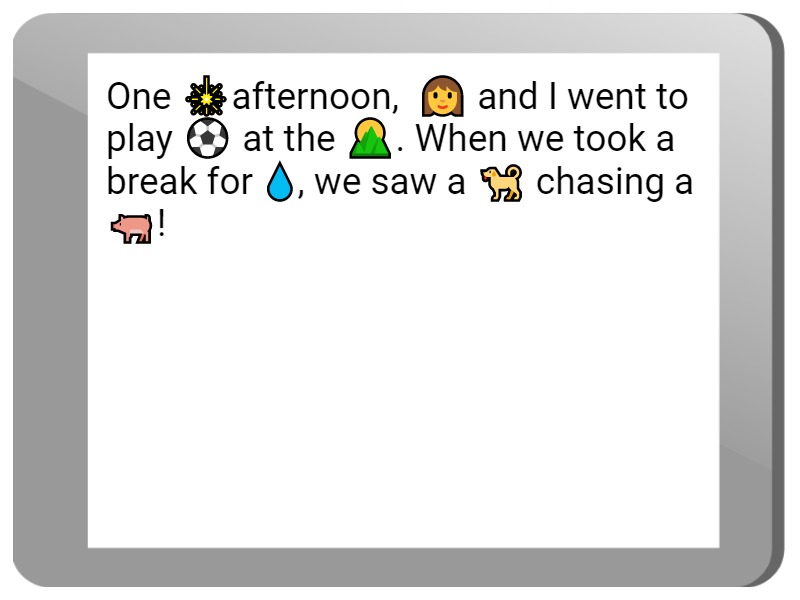
44. Design a superhero
Tap into students' passion for comics and superheroes by asking them to share some favorites. Then, ask them what qualities or "powers" make a great superhero.
Use an ID card approach to help them define their hero's identity.
Discuss as a class, and then ask each student to design their own superhero and explain how their traits make them a hero.
Explore a Design a Superhero lesson plan
45. Design a how-to book or presentation
What can your students teach others? Procedural writing is an excellent way for students to become experts in a topic and feel confident about their ability to share the information with others.
Explore a Procedural Writing lesson plan
46. Play with virtual math manipulatives
Math manipulatives provide a tangible way to help students see and grasp the nature of numbers and procedures. Use the virtual math manipulatives in tools like Wixie to turn practice into play for deeper mathematical understanding.
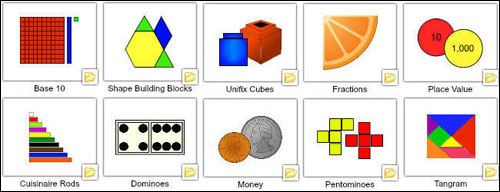
47. Write student names in hieroglyphics
Many first graders can associate the ancient Egyptians with pyramids, mummies, and even hieroglyphics. Hieroglyphs were pictures used as a form of writing, representing words, ideas, and even sounds. Have students add hieroglyps for each letter of their name to an image of a cartouche.
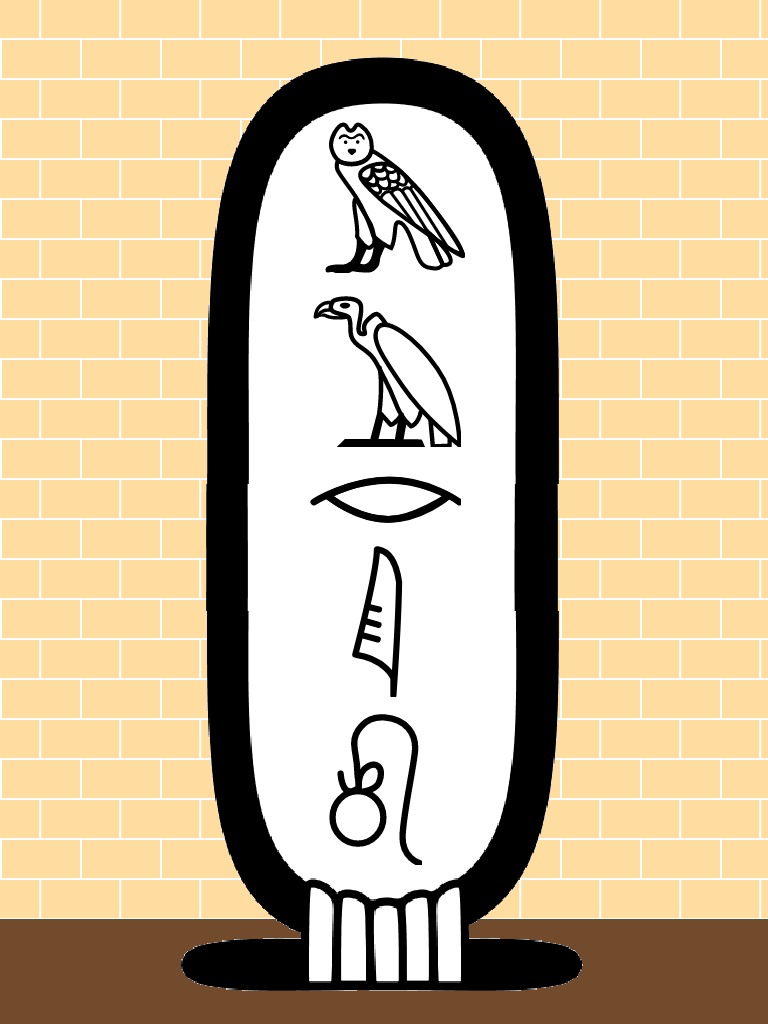
48. Create glyphs to share data
Like hieroglyphics, glyphs use pictures to represent information. Glyphs are a great way to get young learners to follow directions and play with how data can be displayed.
Create a glyph activity like this butterfly to have students share information about how they spent their week by adding symbols to a butterfly's wings. Be sure they use the record button to explain their work.
49. Play with patterns
Learning how to identify and create patterns helps build foundations for future math, even algebra! Digital art tools make it easy to paint patterns or add images to make ABA, ABBA and other repeating patterns.
50. Watch the weather and showcase the seasons
The changing weather seasons are scientific phenomenon that students can easily see. Ask students to record their observations using pictures and new terminology to create strong foundations for the scientific method.











